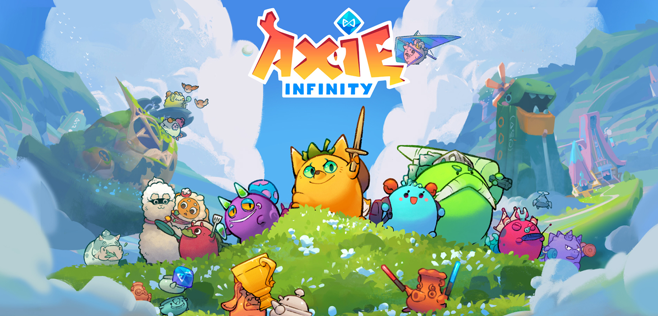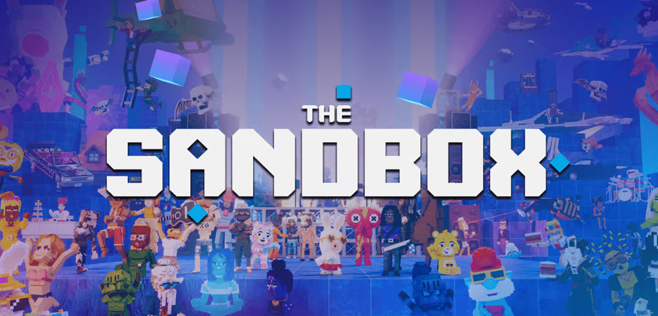Published 22 May 2024
Ratex.ai/
- Blog/
- Gaming/
- Understanding the Economics of Crypto Gaming: Tokenomics, In-Game Currencies, and Revenue Models
Understanding the Economics of Crypto Gaming: Tokenomics, In-Game Currencies, and Revenue Models

Crypto gaming, a fusion of blockchain technology and the world of gaming, has been capturing the attention of both gamers and crypto enthusiasts alike. This innovative concept allows players to engage in immersive gaming experiences while also participating in the crypto ecosystem, often through the use of in-game currencies and tokens. As the popularity of crypto gaming continues to grow, it is increasingly important for users to understand the economic aspects that underpin these games, such as tokenomics, in-game currencies, and revenue models.

Tokenomics in Crypto Gaming
Tokenomics, a term derived from the combination of "token" and "economics", refers to the study of the economic aspects of tokens within a particular ecosystem, such as crypto gaming. In this context, tokenomics encompasses various elements, including token types, distribution, supply, and demand, which collectively influence the overall game economy and player engagement.
Token Types in Crypto Gaming
Crypto games often incorporate different types of tokens, each serving a unique purpose within the game's ecosystem. Some common token types include:
- Utility Tokens
These tokens provide users with access to specific features, goods, or services within the game. For example, utility tokens can be used to purchase in-game items, unlock new levels, or participate in special events.
- Governance Tokens
Governance tokens grant holders the power to vote on decisions that shape the game's future, such as the introduction of new features, changes to the tokenomics, or the allocation of funds from the game's treasury.
- Security Tokens
While less common in crypto gaming, security tokens represent an investment in the game's underlying company or project. They often provide holders with rights to dividends, profit-sharing, or asset ownership, and are subject to strict regulatory requirements.
Token Distribution, Supply, and Demand
The way in which tokens are distributed, as well as their supply and demand dynamics, can significantly impact the overall game economy and player engagement.
- Token Distribution
Crypto games may employ various methods for distributing tokens, such as play-to-earn models, airdrops, or initial exchange offerings (IEOs). A well-designed token distribution strategy can help to foster a vibrant and engaged community, while also ensuring that tokens are allocated fairly and transparently.
- Token Supply
The total supply of tokens, as well as the rate at which new tokens are introduced into the ecosystem (e.g., through inflation or token minting), can influence the value and utility of the tokens. A balanced token supply strategy can help to maintain a stable and sustainable game economy.
- Token Demand
The demand for tokens within a crypto game is often driven by factors such as their utility, the game's popularity, and the overall sentiment of the crypto market. Ensuring that tokens have a clear and compelling use case, while also promoting the game to a wider audience, can help to generate and sustain token demand.
By understanding the various elements of tokenomics in crypto gaming, users can make more informed decisions about the games they choose to play and the tokens they choose to invest in. Moreover, game developers can leverage this knowledge to create more engaging, sustainable, and successful crypto gaming experiences.

In-Game Currencies and Their Interaction with Cryptocurrencies
In-game currencies have long been a staple of the gaming industry, allowing players to purchase virtual goods, access new content, or engage in other forms of in-game transactions. In the context of crypto gaming, in-game currencies often take the form of cryptocurrencies or tokens, which can be seamlessly integrated into the game's economy and offer several unique benefits and challenges.
Purpose and Usage of In-Game Currencies in Crypto Games
In-game currencies in crypto games serve a variety of purposes, including:
- Medium of Exchange
In-game currencies facilitate transactions between players, as well as between players and the game's ecosystem. This can include the buying and selling of virtual assets, such as in-game items, land, or resources.
- Incentive Mechanism
Crypto games often use in-game currencies as a means of rewarding players for their engagement and contributions to the game. For example, players may earn tokens for completing quests, winning battles, or staking their tokens to support the game's infrastructure.
- Value Storage
In some cases, in-game currencies can function as a store of value, with players accumulating tokens or cryptocurrencies in the hopes of benefiting from their future appreciation in value.
Relationship between In-Game Currencies and Established Cryptocurrencies
In-game currencies in crypto games can be directly tied to established cryptocurrencies, such as Bitcoin, Ethereum, or stablecoins, or they can exist as independent tokens or cryptocurrencies within the game's ecosystem.
- Directly Tied to Established Cryptocurrencies
By pegging the value of in-game currencies to that of established cryptocurrencies, game developers can leverage the liquidity, security, and network effects of these assets. However, this approach can also expose the game's economy to the price volatility and regulatory considerations associated with these cryptocurrencies.
- Independent Tokens or Cryptocurrencies
In-game currencies that exist as standalone assets within the game's ecosystem can offer greater flexibility and control for game developers, as well as the potential for value appreciation specific to the game. However, these assets may struggle to achieve the same level of liquidity, security, and network effects as their more established counterparts.
Benefits and Challenges of Integrating Cryptocurrencies into the Gaming Economy
The integration of cryptocurrencies into the gaming economy offers several benefits, such as:
- Enhanced Security and Transparency
Cryptocurrencies and blockchain technology can provide a more secure and transparent foundation for in-game transactions, reducing the risk of fraud and ensuring that all players have equal access to the game's economy.
- True Ownership of Virtual Assets
By tokenizing in-game items and assets, players can gain true ownership of these assets, as well as the ability to trade, sell, or transfer them outside of the game's ecosystem.
- Global and Interoperable Gaming Economies
Cryptocurrencies can enable the creation of global, interoperable gaming economies, where players can seamlessly move their assets and value between different games and platforms.
However, there are also several challenges that must be addressed, including:
- Price Volatility
The value of cryptocurrencies can be highly volatile, which can have a destabilizing effect on the game's economy and the value of players' assets.
- Liquidity
Ensuring that there is sufficient liquidity for in-game currencies, especially those that are not directly tied to established cryptocurrencies, can be a significant challenge for game developers.
- Regulatory Considerations
The integration of cryptocurrencies into the gaming economy may expose game developers and players to additional regulatory scrutiny and compliance requirements.
By carefully considering the benefits and challenges of integrating cryptocurrencies into the gaming economy, game developers can create more engaging, secure, and interoperable gaming experiences for their players.

Revenue Models in Crypto Gaming
Crypto games employ a variety of revenue models that leverage the unique features of blockchain technology and cryptocurrencies. These models not only generate value for game developers and other stakeholders but also incentivize player engagement and foster a sustainable game economy.
Play-to-Earn Model
The play-to-earn model allows players to generate income by participating in the game and completing specific tasks or objectives. In crypto games, this often involves earning in-game currencies or tokens, which can be traded for other cryptocurrencies or fiat currencies on various exchanges. This model can be highly effective in attracting and retaining players, as it provides a tangible financial reward for their time and effort.
In-Game Marketplaces
In-game marketplaces are another common revenue model in crypto gaming. These platforms enable players to buy, sell, or trade virtual assets, such as in-game items, land, or resources, using cryptocurrencies or tokens. Game developers can generate revenue by charging fees or commissions on these transactions, while also fostering a more dynamic and engaging game economy.
Staking and Liquidity Provision Mechanisms
Some crypto games incorporate staking and liquidity provision mechanisms, which allow players to earn passive income by locking up their tokens or cryptocurrencies for a specific period or providing liquidity to the game's ecosystem. These models can help to stabilize the game's economy, increase the utility of in-game currencies, and encourage long-term player engagement.
Potential Implications for the Broader Gaming Industry
The innovative revenue models employed by crypto games have the potential to significantly impact the broader gaming industry, as well as the future of crypto gaming.
- Shifting Value Dynamics
The introduction of revenue models that directly benefit players, such as play-to-earn and staking mechanisms, can lead to a more equitable distribution of value within the gaming industry, as well as a greater emphasis on player satisfaction and engagement.
- New Monetization Opportunities
The integration of cryptocurrencies and blockchain technology into the gaming economy can create new monetization opportunities for game developers, such as the sale of tokenized virtual assets or the provision of decentralized gaming services.
- Greater Interoperability and Collaboration
The use of cryptocurrencies and blockchain technology can facilitate greater interoperability and collaboration between different games and platforms, as well as the emergence of new, decentralized gaming ecosystems.
By embracing the unique features of blockchain technology and cryptocurrencies, game developers can create more engaging, rewarding, and sustainable gaming experiences, while also contributing to the ongoing evolution of the gaming industry.

Case Studies: Examining the Economics of Popular Crypto Games
To better illustrate the economic concepts discussed in this article, we will now examine the tokenomics, in-game currencies, and revenue models of three popular crypto games: Axie Infinity, Decentraland, and The Sandbox.

Axie Infinity
Axie Infinity is a blockchain-based, play-to-earn game that allows players to collect, breed, and battle fantastical creatures called Axies. The game's economy is underpinned by two main tokens:
- Small Love Potion (SLP)
SLP is an ERC-20 token that serves as the game's primary in-game currency. Players can earn SLP by participating in battles and completing quests, and then use it to breed new Axies or trade it on various exchanges.
- Axie Infinity Shards (AXS)
AXS is the game's governance token, which grants holders the ability to vote on decisions related to the game's development and future direction. AXS can also be staked to earn passive income or traded on cryptocurrency exchanges.
Axie Infinity's play-to-earn model and the ability to earn real-world value through SLP and AXS have been key factors in the game's rapid growth and success.

Decentraland
Decentraland is a decentralized, virtual reality platform that allows users to create, explore, and monetize their own virtual experiences and environments. The platform's economy is centered around two main tokens:
- MANA
MANA is an ERC-20 token that serves as the platform's primary currency. Users can purchase MANA on various exchanges and then use it to buy virtual land, goods, and services within Decentraland.
- LAND
LAND is a non-fungible token (NFT) that represents a unique, virtual parcel of land within Decentraland. LAND owners can develop their parcels, lease them to other users, or trade them on the platform's marketplace.
Decentraland's revenue model is primarily based on the sale of virtual land and assets, as well as fees and commissions charged on various transactions within the platform. The platform's emphasis on user-generated content and the ability to monetize virtual experiences have been important drivers of its growth and popularity.

The Sandbox
The Sandbox is a blockchain-based, virtual gaming world that allows users to create, share, and monetize their own gaming experiences. The game's economy is built around three main tokens:
- SAND
SAND is an ERC-20 token that serves as the game's primary currency. Players can use SAND to purchase virtual land, assets, and services, as well as participate in the game's governance and staking mechanisms.
- LAND
LAND is a non-fungible token (NFT) that represents a unique, virtual parcel of land within The Sandbox. LAND owners can develop their parcels, lease them to other users, or trade them on the game's marketplace.
- ASSETS
ASSETS are ERC-1155 tokens that represent virtual items and resources within the game. Players can create, trade, or use ASSETS to enhance their gaming experiences.
The Sandbox's revenue model is primarily based on the sale of virtual land and assets, as well as fees and commissions charged on various transactions within the game. The platform's focus on user-generated content, play-to-earn mechanics, and the integration of NFTs have been key factors in its success and differentiation within the crypto gaming landscape.
By examining the tokenomics, in-game currencies, and revenue models of these popular crypto games, we can gain a deeper understanding of the economic dynamics that underpin the crypto gaming industry and the strategies employed by game developers to achieve success and sustainability in this rapidly evolving space.

Conclusion
As the crypto gaming industry experiences rapid growth and innovation, it becomes increasingly important for all individuals and organizations involved to keep up-to-date with the latest advancements. This includes game developers, players, investors, and even regulators, as each group's decisions and actions can have a significant impact on the industry's trajectory. By staying informed, stakeholders can better adapt to changes, identify new opportunities, and make well-informed decisions in the dynamic crypto gaming landscape.
Read More




 Get RateX Pro
Get RateX Pro
 25 Apr 2024
25 Apr 2024
